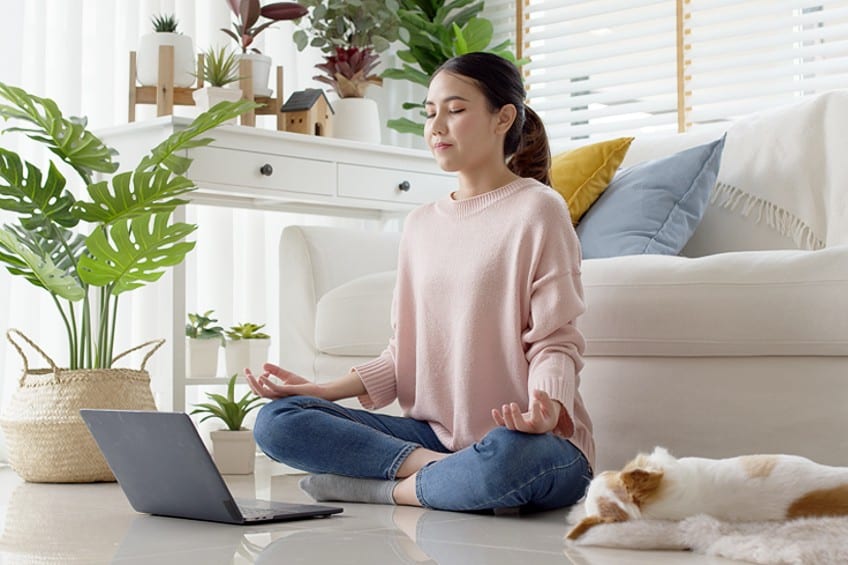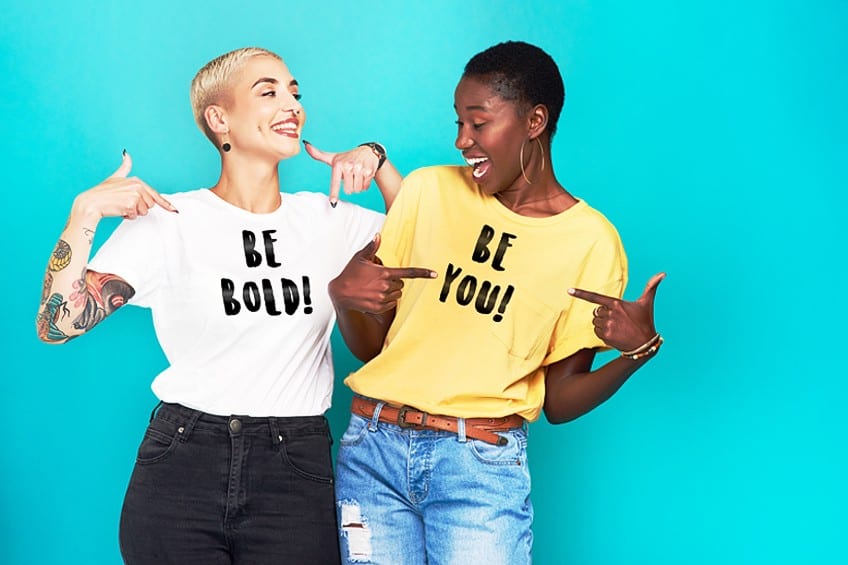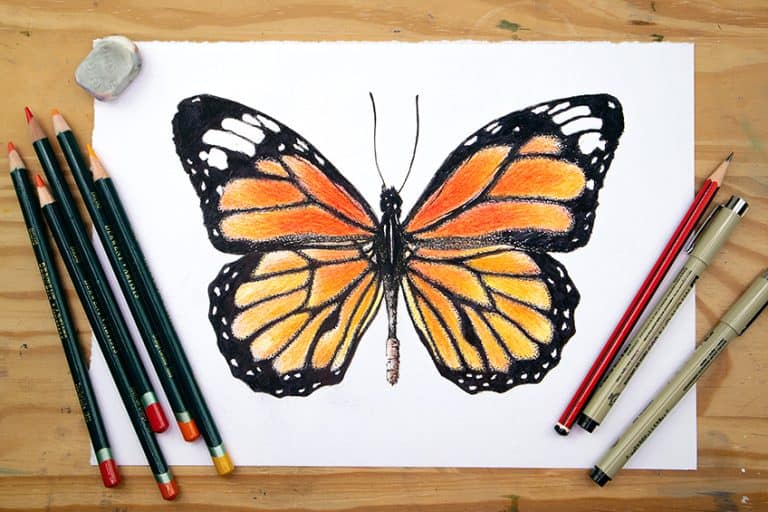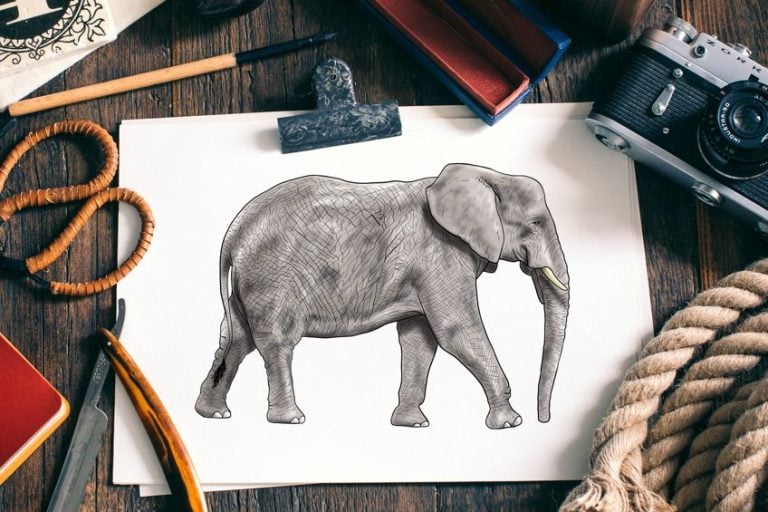How to Get Better at Drawing – Professional Drawing Skills
Do you need to improve your drawing skills in a certain area? Maybe you need to focus more on characters and details, or maybe you want to discover your own drawing style. Perhaps you simply want to create a drawing habit, or you have never drawn before and want to start. In this article, we aim to help you learn how to get better at drawing!
The Benefits of Learning How to Draw
There are many advantages to learning drawing skills, even if you are simply doing it for fun. The number one benefit is that drawing can help to develop brain activity. There are numerous ways to stimulate your brain, but writing is very effective for stimulating many different parts of the brain. So, drawing can help to keep your brain in fine condition.
Other benefits include some of the following.
Improving Memory
Not only does drawing just keep your brain healthy, but it also helps with improving memory. There have even been studies done that reveal how drawing can help with Alzheimer’s. This is because when we draw, we are relying on our knowledge and recall skills to help us remember the various drawing techniques.

Improving Creativity
Using your imagination when drawing is another way you need to draw on your stored memories and information to come up with ideas. Drawing provides an outlet where you can visualize your thoughts and helps you to express what you are feeling.
So, improving your drawing skills can help to develop creativity.
Aids in Stress Relief
Drawing can be a way for you to escape and remove yourself mentally from a stressful situation. It can also be a way of releasing and expressing how you feel and can improve your mental health. Drawing requires your full attention, so your mind tends to focus on the moment and filters out all the anxious thoughts while you are busy drawing. You can also use drawing to help increase positive emotions, as you gain a feeling of accomplishment by creating something unique. This also provides a great boost in self-esteem.

Improves Various Skills
When drawing, the process can improve various skills. For example, drawing is the perfect medium you can use to express your feelings. If you find it difficult to say what is bothering you, drawing might be a way to convey your emotions to others. It is also a good way to help you process any difficult emotions better and work through them. Here are a few more skills drawing can improve on.
- Problem-solving skills: Drawing and art require a certain amount of planning and experimentation to achieve what you want. This can mean having to solve a wide range of problems, which can also improve your critical thinking skills in life.
- Fine motor skills: Everybody can work to improve these skills, and drawing can help you to become better at producing more efficient and precise hand movements.
- Observation skills: When studying various drawing techniques, you need to understand color, shading, and how to get those details, which requires a level of concentration and observation.
Besides all of the benefits and skills you can learn to become a better drawer, the process should be fun. There is no perfect way to do things, you can relax and simply let the creativity flow. Let us now look at a few common misconceptions about drawing.
Common Misconceptions About Drawing
Drawing is an ideal method of expressing oneself, however, there are a few misconceptions people consider before even trying to draw themselves. You need to have the talent to draw, or it takes a long time to learn, are some of the statements people believe in. To overcome these misconceptions, let us look at a few of the more common ones.

Must You Have a Talent for Drawing?
It may seem like many people have an extraordinary talent for creating amazing drawings. However, drawing is accessible to everyone, as it is a skill that can be learned like all others. Getting better at sketching may take a little time and work, but it can be done. The younger you are exposed to learning how to draw, the easier it is.
However, it does not matter at what age you start drawing, anybody at any age can become a better drawer.
It Takes Years to Learn Drawing Skills
If you follow a specific plan and practice drawing, you can learn to draw well in a few months. However, it does take longer to become an expert and skilled artist. But if you are looking to learn the basics of drawing, you can do it quite quickly. You also do not need many tools to begin drawing, making it even easier to do.

You Have to Practice Drawing for Hours
You need to practice drawing skills to get better at sketching, however, it is not the length that matters but the frequency and consistency that will help. Even if it is only 15 minutes of drawing every day, it would work better than sitting down and focusing on drawing for a couple of hours.
Understanding the Basics of Drawing
As mentioned, drawing only requires a few materials to start with. All you need are some good pencils or a pencil set, a sketchbook, an eraser, colored pencils, and a good pencil sharpener. A blending stump is also important for helping to create better shading techniques. You can also add some charcoal, which offers a broader value and creates darker marks than a pencil. Drawing pens with ink can also be included, as they help to refine lines and are used to develop texture and form.
Most of these materials are easily purchased at your local art store. We will now briefly discuss a few of the basic drawing skills required.
Understanding Basic Shapes
The first thing to learn is to look for different shapes. Everything in the world around you can seem a bit too complex, so breaking things down into simple shapes can help you to get better at sketching. You learn to observe the overall shapes and minor shapes, to make sure the shapes are adjusted until they are aligned and in proportion to one another. Once these shapes are in place and form your foundation, only then do you begin adding details. Some basic shapes include ovals, triangles, circles, and rectangles. Those larger shapes that stand out when you first look at something, are known as your anchor points.

Creating Lines and Contours
Once the shapes are down, and you are satisfied that everything looks in proportion, you can begin adding more structure. You can start adding major lines, drawing boundaries, and changing mistakes as you go along until you are happy with the results.
Perspective and Proportions
Proportions are the ratios between the depth, width, and height of a subject. You need to draw something that appears similar to the real thing. You and anybody who looks at the drawing will notice if this is not done properly. When drawing, you will also need to understand perspective, which is a technique you can use to create the appearance of depth.
For example, a straight road that disappears into the distance.
Adding Details
You can then begin to block out tonal values, creating lighter and darker values. When doing this, you can look for the larger shapes and do them lightly, so you can adjust them if you are not sure it looks right. Next, you can add patterns, color, and details to the structure of your prepared drawing.

Using Negative Space in Drawings
You should also understand the importance of negative space within a drawing. Here the focus is not on the subject or drawing but on the space around it. You can also make use of negative space to draw more accurately.
The negative space can help to give form to a shape, by filling the area surrounding it.
Developing Your Drawing Skills
Wondering how to improve your drawing skills? You might get the basics of drawing down quickly, but it is a continuous learning process. There are many things you can do to develop and enhance your drawing skills to become a better drawer. Let us have a look at a few ideas that can help you.
Observational Drawing
A simple way to enhance your drawing skills is to observe and then draw what you see. There are three main types of observational drawing you can try and include still life drawing, landscapes, and life or figure drawing. This can help you to see what you are drawing and not simply draw what you think you are seeing. It helps you to understand perspective, lighting, composition, and other drawing principles.
You must continually observe your subject, to create accurate drawings of things you can find around you.
Drawing from Imagination
Just as drawing from observation is helpful, so can drawing from imagination. As you gain more confidence, you can start to add ideas from your imagination. Just remember, that drawing from a reference does not mean copying it exactly. You can take what inspires you most as the starting point for a drawing that could go in an entirely different direction. This means you can use references and other resources for inspiration, but the results are something unique.

Tips for Practicing Regularly
Drawing takes practice, so you need to develop a habit of drawing every day. This does not mean you have to sit down for hours; it can simply be for a few minutes a day. As long as you are consistent and willing to make time for drawing. Let us see what other ideas you can use to learn how to improve drawing skills.
- Carry a sketchbook around with you, so you can draw when something draws your eye.
- Try a daily challenge to draw something, which can be done by yourself, or check online for art challenges you can do with others.
- You do not have to create a masterpiece each time, take a sketchbook and simply fill it with doodles, or different shapes, patterns, or symbols which can also help with improving creativity and inspiration.
- Draw everyday things like the jam jar or cereal box, it does not have to be a bowl of fruit, or something set up or far away.
- To keep it exciting, try out different mediums, such as inks, watercolors, colored pencils, or pastels.
- Challenge yourself and create a drawing with your less dominant hand.
- Set a goal or specific time every day and stick to it.
- Look for inspiration every day and try different styles of drawing.
- Make sure you are having fun when drawing and consider rewarding yourself for committing to practicing.
Exploring Different Drawing Styles
There are many different styles of drawing, and you can try them all out to see what you enjoy doing most. Some styles are easier than others, but with practice, you can choose any style you want. To draw, you can also use different mediums from pencils to chalk, charcoal, pen, and even digital drawing.
Let us have a look at a few of the more popular drawing styles.
Realistic Drawing
This is the accurate depiction of an object, and usually monochromatic when using pencils. You will use the pencil to create different brightness values or lighter and darker areas. This is key to creating realistic drawings, along with transitions as well as edges. Another form of this style of drawing is hyperrealism, which is a drawing that is so real, it could be mistaken for an actual photograph.

Cartoon Drawing
Cartoon drawings tend to be creative and fun and have been popular with the younger generation. However, cartoons have also played a role in providing a way for artists to express themselves through satire and humor that is aimed more at the adult viewer. There are many different styles of cartoon drawing from the more modern style to the classic Disney style.
There are also other influences like manga and anime styles that originated from Japan.
Line Drawing
This has become quite popular, as it is fairly easy to accomplish. The method is used to create an image using lines. The style is simple, yet elegant, and often means that you do not lift the pencil off the page until the image is completed.

Other Styles of Drawing
There are quite a few other drawing styles you can choose. These include simple ideas like doodling to more complex styles like architectural drawings that can be challenging and test your three-dimensional perception. Other drawing styles include the following.
- Geometric drawing: This is the use of geometric shapes to form an image.
- Typography: The practice of typography involves a lot more than simply writing out letters. There are a lot more embellishments and creative ideas that go into this drawing style.
- Anamorphic drawing: You can use this style to create more three-dimensional illusions, which are done on a two-dimensional surface. The image may look distorted from certain angles, but when viewed from the proper perspective, it creates a three-dimensional image.
- Diagrammatic drawing. Making use of drawings to describe how something works.
- Stippling : Creating a drawing using numerous amounts of dots, which are grouped to create an image.
- Hatching: This technique can be used to create texture and depth and involves closely drawn parallel lines. There is also cross-hatching when the lines overlap or cross over one another.
- Scumbling: Used as a shading technique, it involves a whole lot of scribbles and circles to create gradient, depth, as well as texture.
You can also experiment with drawing techniques, which can add more diversity and texture to a drawing, using various patterns. Try playing around with these techniques to create a more interesting image.
Tips for Overcoming Creative Blocks
All artists will reach a point where they feel like they do not know what to draw or paint. Maybe you are doubting your capabilities, and this is stopping you from moving forward. There are some ideas you can try to help when this happens. You can start by changing the scenery, by going out and finding some inspiration instead of waiting for it to find you. See below for a few more ideas you can try.
- Join a workshop online or somewhere close by. Not only can this help with inspiration, but you can also improve your skills and meet other artists.
- Try exercising or taking a walk in nature, but do not forget to take a sketchbook with you.
- Explore other creative avenues, for example, photography or fashion.
- Join an artist community, where you can get inspiration and share your ideas.
- Do not be afraid of failing, making mistakes can be what helps you to develop as an artist.
- If the task seems too overwhelming, break the process up into smaller and more controllable sections. The aim is to just start and not to procrastinate.
- Find more inspiration by visiting art galleries or museums.
Developing Your Own Style
It is important to find your own drawing style, as it is what will make you stand out from the crowd and is most important if you want to sell your work. To do this, it helps to find something you enjoy drawing. To develop your own style, you first have to find what interests you and then draw it. This could be landscapes, portraits, or flowers, whatever you draw often, is most likely what appeals to you most. You will need to experiment with and look at numerous different types of art. You should also experiment with a variety of drawing mediums and drawing styles to see what suits you best.
You can also find an artist you like, consider what attracts you to their art, and use this as a building block to develop your own style.
You need to practice and practice the various drawing techniques and by doing this, you can help to develop your style. While practicing and creating your art pieces, consider the purpose or reason behind your artwork. The reason behind your choices is different from everyone else, which is what can make it more unique. Consider focusing on a specific topic, and by practicing this, you become more familiar with composition, form, and structure. Once you have practiced drawing something over and over again, you are better equipped to then make changes and transform it into something more unique. Once you begin to transform something, it becomes a way that you draw, which could be the unique style you are looking for.
Developing your own style also does not happen immediately, it takes a lot of practice, patience, and time. This could mean months of hard work before you begin to see something developing. Continue drawing, experimenting, and make sure to keep all your drawings to analyze them and check your progress.
By the end, your artwork will be something only you can create; a style uniquely yours.
Sharing Your Art
Once you have built up some confidence in your work, you might feel it is time to share your work. Social media is a great way to get inspiration and see other artists’ work, and a place where you can share your work. However, you should try to avoid comparing your work to others, especially if you are new to the art scene. Other artists have taken years to get where they are, and like them, you are on your own journey. It can also be lonely as an artist, and sharing your work is a way to connect with others and bring more beauty into the world. Sharing your art is also a way of getting out of your comfort zone, and who knows, you might even be an inspiration to other artists.
You are going to experience both positive as well as negative feedback when you share your work.
First, spend time trying to critique your own work and consider what you want to get out of the feedback from others. You can get family and friends to look at your work, but ask other artists about your work, as they have more of an idea of what feedback or constructive criticism to provide. Just because somebody does not like your work, does not mean you should quit. Learn to accept positive criticism and recognize that you do not have to accept any negative criticism. However, how you reply to negative criticism is also important. Do not be offended and ask them to provide suggestions or the reason why they feel this way. You can then either accept or reject these comments.

Criticism should come from a place of encouragement, where you can then improve your work on what was discussed. On the other hand, positive feedback provides a great feeling and is encouraging for the artist. Below are a few places where you can share your artwork.
- Galleries
- Blog posts
- Online shop
- Selling at fairs
- Display in your home or business
Some Confidence-Boosting Techniques
If you are lacking in confidence, which is stopping you from drawing and creating art, then you need to try a few confidence-boosting techniques. A great way to help with self-confidence is to encourage yourself. Try to ignore all the negative statements in your mind, and instead, try to replace these with more positive thoughts. To do this effectively, you should talk out loud to yourself. Say things like, “I am capable”, or “I am talented and worthy”.

People are social beings, so socializing is another way to help boost confidence. Join an art community or go to fun workshops where you can all share in and interact with one another. You can also avoid anxiety over your work by accepting imperfection. You do not have to accept unrealistic expectations to do things perfectly. Art should be about having fun and loving what you do.
As we have learned, there are numerous ways for you to learn how to get better at drawing. You will also learn that it is a process, and that it takes a little time to grow and develop drawing skills. Becoming proficient in drawing does not happen overnight. Ultimately, drawing should be something you enjoy, and from this, you will be able to create beautiful art.
Frequently Asked Questions
How Can I Improve My Drawing Skills?
When searching for how to improve your drawing skills, you will find that there are many ways to develop your drawing skills. The most effective way to get better at drawing is to practice, and then practice some more. Be sure to make the time to do this and be consistent in practice, even if it is only a few minutes a day.
Is Drawing a Talent or Something You Can Learn?
Drawing is a skill that you can practice and grow, as it requires various skills that you can learn. Some people have some form of natural talent, but with practice and hard work, anybody can become a great artist.
What Are the Fundamentals of Drawing?
There are drawing skills everyone must learn to develop the ability to draw better. Drawing students should be able to understand light or value, perspective, shapes, lines, and edges. With practice, students can grow with confidence and accuracy.
Matthew Matthysen is an educated multidisciplinary artist and illustrator. He successfully completed his art degree at the University of Witwatersrand in South Africa, majoring in art history and contemporary drawing. The focus of his thesis was to explore the philosophical implications of the macro and micro-universe on the human experience. Matthew uses diverse media, such as written and hands-on components, to explore various approaches that are on the border between philosophy and science.
Matthew organized various exhibitions before and during his years as a student and is still passionate about doing so today. He currently works as a freelance artist and writer in various fields. He also has a permanent position at a renowned online gallery (ArtGazette) where he produces various works on commission. As a freelance artist, he creates several series and successfully sells them to galleries and collectors. He loves to use his work and skills in various fields of interest.
Matthew has been creating drawing and painting tutorials since the relaunch in 2020. Through his involvement with artincontext.org, he has been able to deepen his knowledge of various painting mediums. For example, watercolor techniques, calligraphy and lately digital drawing, which is becoming more and more popular.
Learn more about Matthew Matthysen and the Art in Context Team.









